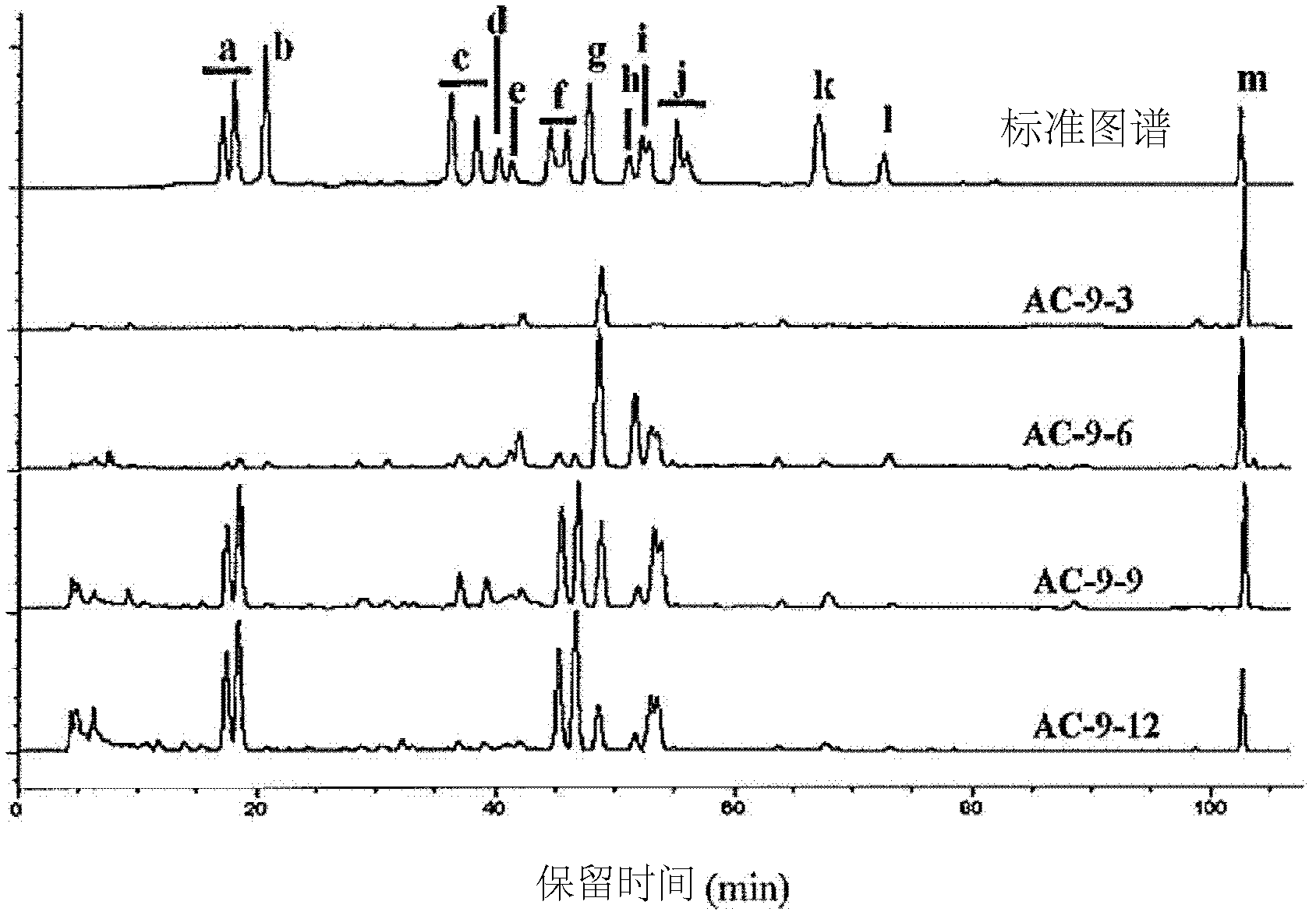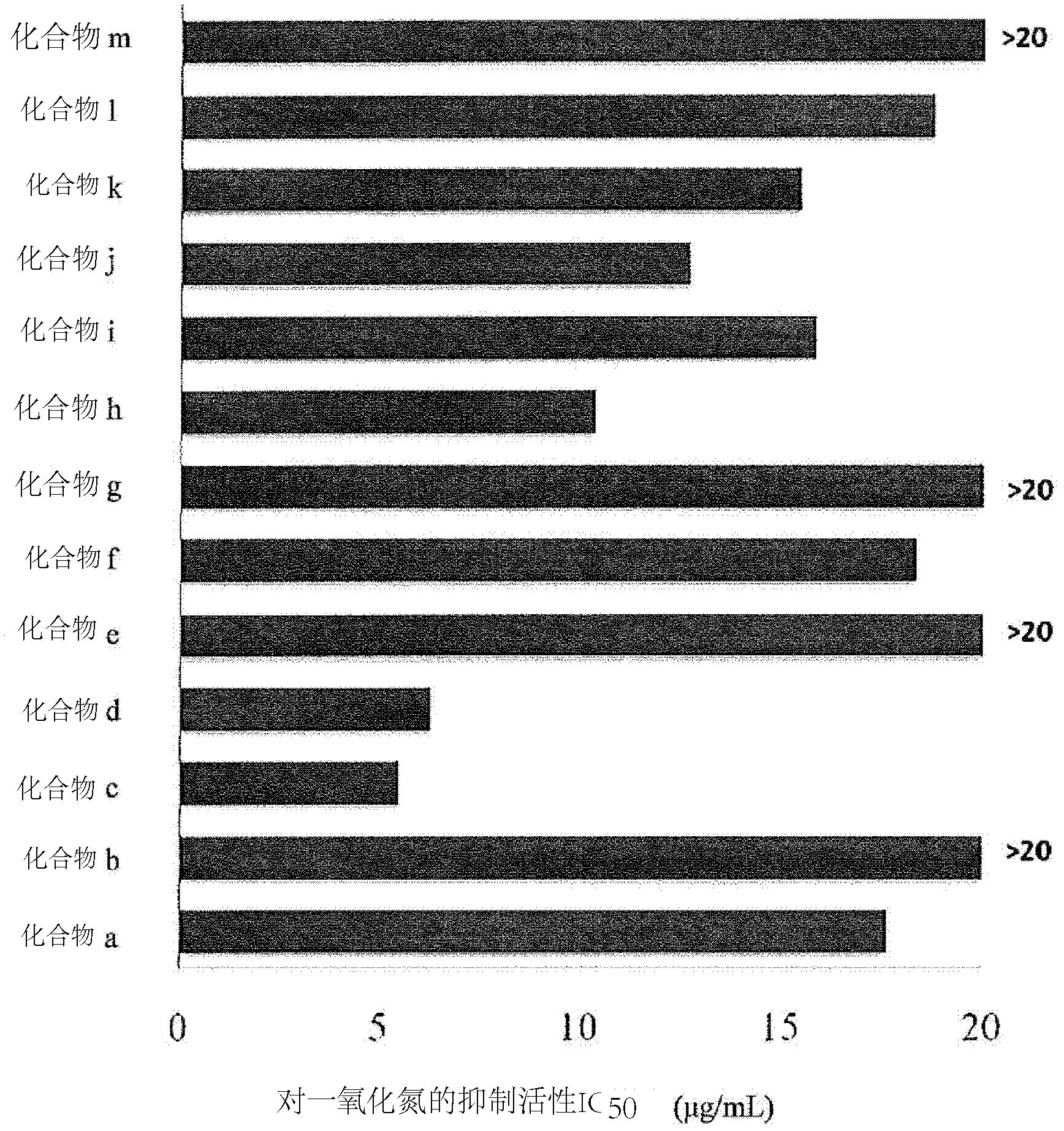Polyacetylene compound, extract containing same and application of polyacetylene compound
A technology of compound and polyacetylene, applied in the field of polyacetylene compound and its application, can solve the problems that the experimental method for studying the fruiting bodies of Antrodia camphorata has not been established, and the metabolites of Antrodia camphorata have not been completely studied.
- Summary
- Abstract
- Description
- Claims
- Application Information
AI Technical Summary
Problems solved by technology
Method used
Image
Examples
Embodiment 1
[0045] Embodiment one: Antrodia camphorata used in the present invention
[0046] The Antrodia camphorata used in the present invention was obtained from National Chung Hsing University, and four strains of AC-3, AC-5, AC-7 and AC-9 were obtained. For the needs of the experiment, these four lines were cultivated on Cinnamomum kanehirai for 9 months to obtain AC-3-9, AC-5-9, AC-7-9 and AC-9-9. Among them, in addition to the strains cultivated for 9 months, AC-9 also obtained strains cultivated for 3 months, 6 months and 12 months: AC-9-3, AC-9-6, AC-9- 12.
Embodiment 2
[0047] Embodiment 2: Obtaining Antrodia camphorata fruiting body extract
[0048] Before proceeding with the extraction step, first test the efficiency of different extraction times to optimize the extraction. In order to test the best extraction time, fresh AC-9-9 Antrodia camphorata fruit bodies were dried for 72 hours, and then crushed into powders with an average particle size of less than 0.7 mm. 5 grams of fruiting body powder were measured and placed in a flask (250 mL) and mixed with 100 mL of 75 wt% ethanol (EtOH). The Erlenmeyer flask containing the fruiting body powder and alcohol was placed in an ultrasonic shaker (Branson 5510, Branson Ultrasonic, Ontario, Canada) to achieve thorough mixing. Fruiting body powder and 75 wt% alcohol were mixed for 10, 20, 30, 60, 120 minutes (extraction time) respectively, allowed to decant and filtered in vacuo. Then, it was concentrated and dried in a rotary evaporator. The yield series obtained at different extraction times ar...
Embodiment 3
[0053] Embodiment three: analyze the composition of the extract of Antrodia camphorata AC-9-9 obtained in embodiment two
[0054] In order to more completely understand the components contained in the fruiting body extract of Antrodia camphorata, this example uses high-pressure liquid chromatography (HPLC) to further separate the extract obtained in Example 1.
[0055] The high-pressure liquid chromatography method used in this example is an Agilent 1100HPLC system equipped with a UV detector (UV detector). The stationary phase was a carbon 18 column (Luna C18 column; 250×10.0 mm, Phenomenex, Torrance CA). The mobile phase is a mixture of the following three solutions: (A) water; (B) methanol (MeOH); (C) acetonitrile (acetonitrile). The chromatographic gradient (gradient elution profile) is as follows: 0~5 minutes, A:B:C=40:30:30 (isocratic); 5~95 minutes, A:B:C=40:30:30 to A : B: C = 10: 10: 80 (linear gradient); 95 ~ 105 minutes, A: B: C = 10: 10: 80 to A: B: C = 0: 0: 100...
PUM
 Login to View More
Login to View More Abstract
Description
Claims
Application Information
 Login to View More
Login to View More - Generate Ideas
- Intellectual Property
- Life Sciences
- Materials
- Tech Scout
- Unparalleled Data Quality
- Higher Quality Content
- 60% Fewer Hallucinations
Browse by: Latest US Patents, China's latest patents, Technical Efficacy Thesaurus, Application Domain, Technology Topic, Popular Technical Reports.
© 2025 PatSnap. All rights reserved.Legal|Privacy policy|Modern Slavery Act Transparency Statement|Sitemap|About US| Contact US: help@patsnap.com



